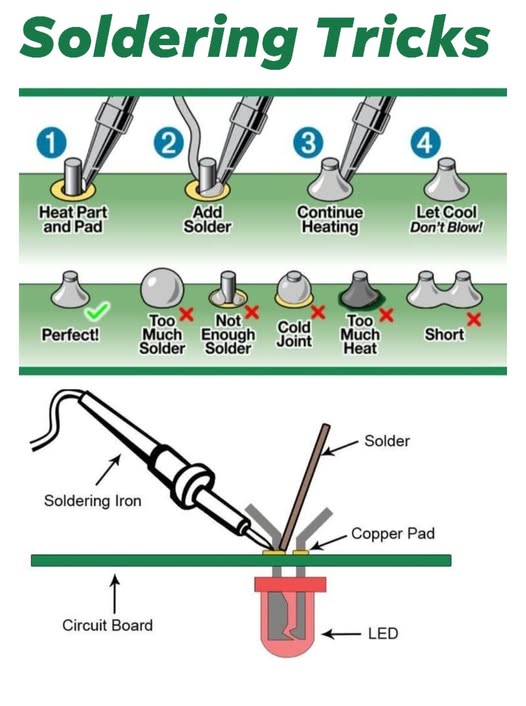Please note that in the UK we say SOL-DER-ING not Soddering.
Soldering is an essential skill for anyone working with electronics, DIY projects, or repairs. With the right tools, techniques, and safety precautions, you can achieve professional results in no time. Here’s everything you need to know to get started. If you need a Soldering set, you could do worse than the one reviewed here.
Tools Needed
To solder successfully, you’ll need the following tools:
- Soldering Iron: A basic soldering iron or a temperature-controlled one for precision.
- Solder: A lead-free or rosin-core solder for eco-friendly and reliable connections.
- Soldering Stand: Holds the soldering iron safely while not in use.
- Sponge or Brass Wool: For cleaning the soldering iron tip.
- De-soldering Pump or Wick: For removing excess solder or fixing mistakes.
- Safety Gear: Protective eye wear and a heat-resistant mat.
- Tweezers or Helping Hands: Holds your components steady as you work.
Step-by-Step Guide
- Preparation:
- Place your workspace on a heat-resistant mat or surface.
- Make sure you have plenty of ventilation.
- Ensure components and wires are clean—no grease or oxidation.
- Heating the Soldering Iron:
- Plug in the soldering iron and let it reach the required temperature (typically 350–400°C for electronics soldering).
- Place Soldering Iron in a Stand, be careful it is hot!
- Clean the tip using a damp sponge or brass wool.
- Tin the Soldering Iron:
- Apply a small amount of solder to the iron tip. This improves heat transfer to the components.
- Join the Components:
- Hold the soldering iron to the connection point and heat it.
- Feed the solder into the joint—not the iron—until it forms a secure bond.
- Remove the iron and let the solder cool naturally.
- Inspect the Joint:
- Ensure the solder is shiny and forms a solid connection.
- Redo any dull or cracked joints as necessary.
Safety Tips
Soldering involves high temperatures and potentially harmful fumes, so it’s important to prioritize safety:
- Work in a Ventilated Area: Use a fume extractor or work near a fan.
- Wear Protective Gear: Always wear safety glasses and avoid loose clothing.
- Handle Hot Tools with Care: Place the soldering iron on a stand when not in use.
- Avoid Lead Exposure: Use lead-free solder to minimize health risks.
- Mind Electrical Safety: Unplug the soldering iron when you’re finished.
Soldering may seem daunting at first, but with practice, patience, and the right precautions, you’ll master the technique in no time. Happy soldering!
Hi I am Marcus, MM0ZIF, a licenced Radio Amateur, Doctor of Musicology, amateur weather enthusiast. I over the years have been a Amateur Radio Tutor, Examiner, and a Regional Manager for the Radio Society of Great Britain.
This site is dedicated more towards Amateur Radio and Weather, with an angle on Technology too. I also maintain https://havenswell.com/ which is my other blog which is more aimed at cooking, hobbies and life in general as well as businness and networking.





